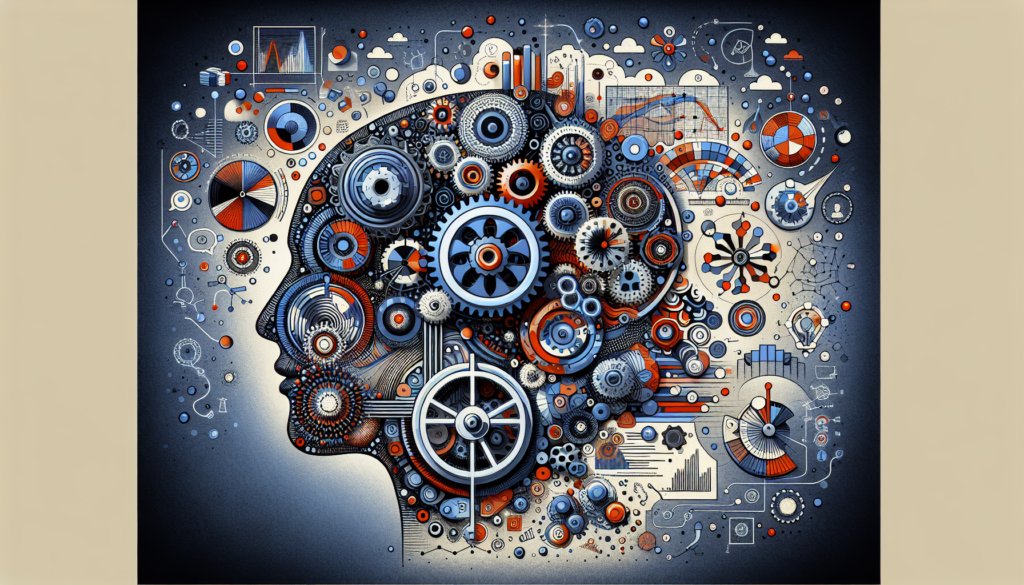The psychology behind web design, its influence on user perception and behavior, is a field of study where the intersection of technology, psychology, and art powerfully manifests itself. Professionals specialized in this area seek to understand and apply psychological principles to create more engaging and effective online experiences both in retaining users and in converting visitors into customers.
Psychological Foundations of Web Design
The visual elements of a website do not just beautify; they evoke emotions and behaviors. This is where color theory, for example, is critical. Colors like blue can generate trust and serenity, while red can evoke urgency or passion. The psychology of shape also plays a central role; soft curves tend to be perceived as friendly and welcoming, in contrast to angular shapes that can convey solidity and professionalism.
Gestalt’s law of proximity, which states that visual elements close to each other are perceived as related, is essential for content organization and guiding the user’s visual journey. Complementarily, the principle of similarity indicates that elements with a similar design are intuitively grouped in the user’s mind, thus strengthening the site’s comprehension.
Typography also plays a crucial role. Beyond readability, the choice of font directly impacts how information is perceived. Serif fonts, for example, can be interpreted as traditional or reliable, while sans-serif fonts are often associated with modernity and minimalism.
Practical Applications: Case Studies
Evaluating relevant case studies, we can see how applying psychological principles to web design affects business outcomes. For instance, an analysis of an e-commerce redesign based on simplicity and visual clarity demonstrated a significant increase in conversion rates, attributed to intuitive navigation and a clear visual hierarchy that facilitated the decision-making process for purchases.
On the other hand, the use of gamification strategies has been shown to increase user engagement. Through the application of elements like points, badges, and leaderboards, behaviors can be influenced and interaction with the site’s content can be fostered in ways that were previously difficult to achieve.
Advances in the Use of Cognitive Psychology
Cognitive psychology provides an invaluable lens for understanding how users process information on a website. Recent studies in usability and user experience (UX) have allowed for the refinement of interaction models that minimize cognitive load and maximize information retention. Techniques such as chunking, which involves dividing information into small units, have been particularly effective.
Innovations in Web Neurodesign
Web neurodesign is an emerging field that seeks to apply findings from neuroscience to interface design. Eye-tracking and brain imaging techniques, among others, are used to deepen the understanding of how users interact visually and emotionally with a website. These cutting-edge tools and techniques are leading a wave of innovation, offering data that can be translated into concrete improvements in interface design.
Comparison with Preexisting Techniques
Incorporating advanced techniques in design psychology sharply contrasts with the traditional approach, based on assumptions and aesthetics over functionality. The transition to data-based strategies and empirical testing has allowed for a more user-centered design and has generated better business results.
Analyzing the impact of these advancements, it is possible to project future innovations in the field. Augmented reality (AR) and virtual reality (VR) are expected to offer new dimensions of interactivity and engagement, taking web design towards sensory and cognitively integrated experiences.
Conclusion
The power of psychology applied to web design lies in its ability to transform sites and applications from mere points of information to powerful communicative and persuasive tools. From color theory and typography to the latest advances in neurodesign and behavioral analysis, web design professionals who integrate this knowledge not only enhance the user experience but also contribute to business success in the digital economy.
The expansion of this discipline and the continuous research into human-computer interaction promise to further unleash the potential of how we perceive and engage with digital worlds, providing a fertile field for innovation centered on a deep understanding of the human mind.

